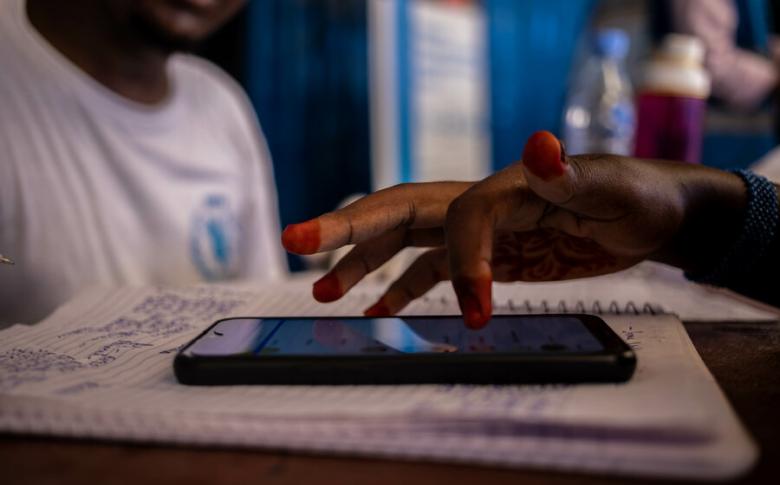A chatbot named Mila: Answering the call for people in Libya

Software part of wider drive to improve efficiency in humanitarian assistance through Artificial Intelligence
By Suzanne Fenton
This article was originally published on WFP.org.
In the ancient streets of the Libyan capital, the usual morning rituals of grinding roasted coffee beans and rattling cups are temporarily paused. It is the final week of Ramadan – a time of peace, reflection and slower starts. For an Emergency Telecommunications Sector (ETS) team spread across Tripoli, Tunis, Beirut and Rome, the feeling of solemnity is joined by one of pride at the imminent launch of its first-ever chatbot in Libya.
Nicknamed Mila – ‘to chat’ in Greek – the Artificial Intelligence (AI) software will be incorporated into the ETS inter-agency call centre that was launched in 2020. Available 24/7 in both English and Arabic, Mila will help bolster Libyans’ access to key information on local humanitarian services. It also promises to provide valuable insights into local needs and concerns, allowing humanitarian programmes to better adapt their activities.
For Fathi Enneji, Common Feedback Mechanism project manager at the World Food Programme (WFP) which leads ETS, using Mila to strengthen targeted assistance delivery and programme impact makes perfect sense: “Humanitarians are increasingly adopting digital transformation [tools] to modernize communication with affected communities, get feedback and promote accountability. This is critical to ensure better programme adjustments [specifically] aligned with the population’s needs.”
Fathi’s words resonate with Marco Codastefano, a data scientist with WFP and the creative force behind Mila as well as other AI-driven initiatives including WFP’s DEEP application, which makes it possible to analyse aerial images more quickly and accurately for emergency response.
When it comes to harnessing the power of machine learning in humanitarian work, Marco is a passionate advocate and something of a digital trailblazer: “Building on existing AI technology, it starts with a simple excel sheet and we just go from there,” he explains.
“The first release of the chatbot wasn’t very intelligent but the more it interacted with users, the more it learned new things and answered questions better. This is the magic behind machine learning.”
That a software programme like Mila can learn to talk and text nearly as fluently as a human, let alone help someone in need of support, seems like something plucked from science fiction.
However, using machine learning to communicate with people could prove to be a tangible tool towards boosting the efficiency of humanitarian assistance. The key is grounding machine-learning models in local contexts.
“This is exactly why we need a country focal point – someone who knows and understands the context and is able to train the model to make it as responsive as possible,” says Marco. “Interaction is fundamental as is addressing the actual needs of the people and not what we think those are.”
His team is currently developing another chatbot for Iraq, a country with its own set of challenges. “The differences between the two countries are incredible,” he says. “It’s just not possible to have one big machine learning model that can answer all questions.” From a language perspective, tailoring chatbots to speak a distinct dialect is key. While both the Iraqi and Libyan chatbots will speak Arabic, there is a world of difference between dialects.
“In a humanitarian emergency, saving time [often] means saving lives, and this is the most powerful characteristic of machine learning in an emergency context,” adds Marco.
Using chatbots that can speak different dialects and understand the specific needs of a group of people will not only help ensure the right assistance is provided faster and with greater accountability. It will also help build trust between affected communities and humanitarians. Chatbot Mila is on the case.